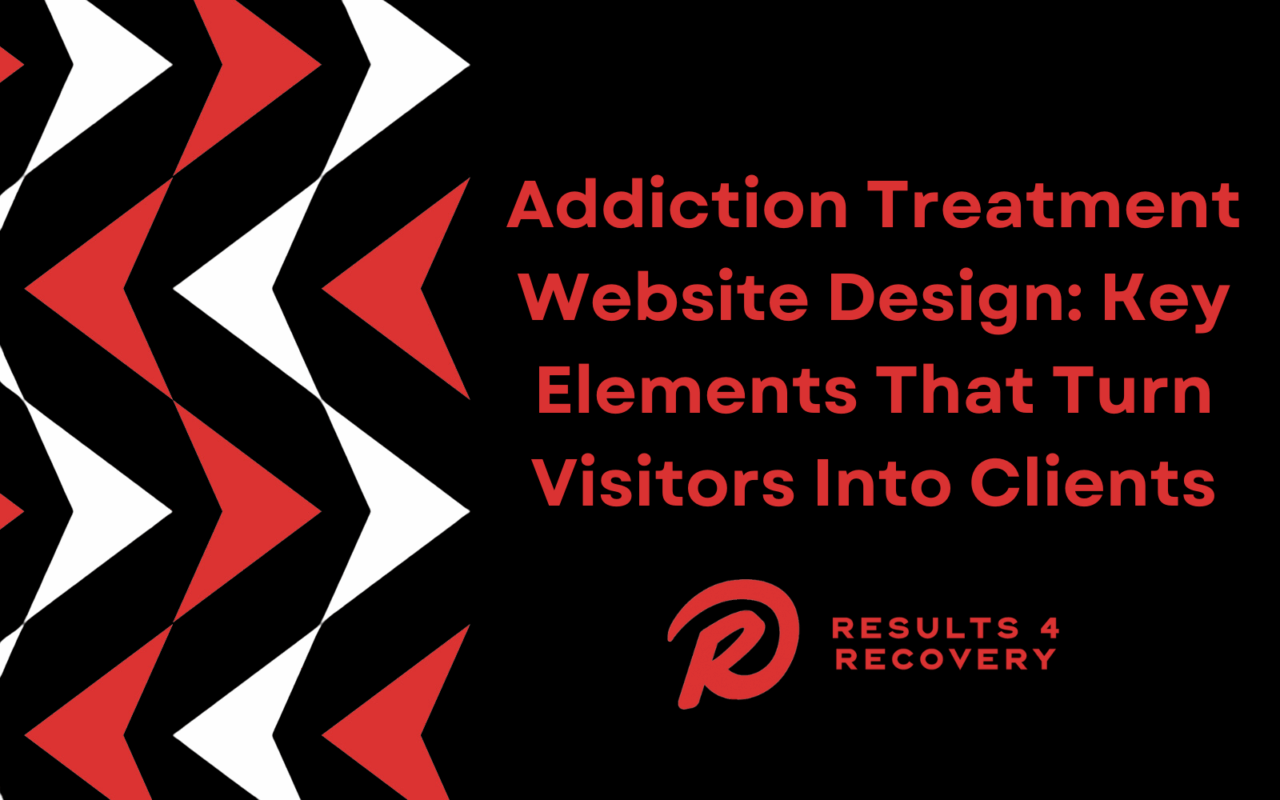Addiction Treatment Website Design
In today’s digital landscape, effective addiction treatment website design serves as the critical bridge between individuals seeking help and the life-changing treatment services they desperately need. A well-crafted treatment center website doesn’t just showcase services—it creates an emotional connection, builds trust, and guides visitors through their journey from initial awareness to enrollment. Understanding the essential elements of successful addiction treatment website design can mean the difference between a website that merely exists online and one that actively transforms lives while growing your treatment center’s client base.
The Psychology Behind Effective Treatment Website Design
Addiction treatment website design must account for the unique psychological state of visitors who are often experiencing crisis, fear, and uncertainty. These individuals or their loved ones are searching for hope, compassion, and professional expertise during one of the most vulnerable moments in their lives. Your website design needs to immediately communicate safety, professionalism, and understanding while removing barriers to taking that crucial first step toward recovery. Successful addiction treatment website design incorporates calming color palettes, clear navigation, and reassuring imagery that reflects healing and hope rather than clinical sterility. The visual hierarchy should guide visitors naturally toward key conversion points—whether that’s a phone call, contact form submission, or insurance verification tool. Every design element, from typography choices to button placement, should reduce anxiety and increase confidence in your treatment center’s ability to provide comprehensive care. The user experience must be seamless across all devices, as many individuals seeking addiction treatment are accessing websites through mobile devices during moments of crisis or while researching options discreetly. Responsive addiction treatment website design ensures that your message of hope and healing reaches visitors regardless of how they access your site.
Essential Trust-Building Elements for Treatment Centers
Trust forms the foundation of effective addiction treatment website design, and several key elements work together to establish credibility with prospective clients. Professional photography showcasing your facility, staff, and peaceful environments helps visitors visualize themselves or their loved ones receiving care in your setting. Authentic testimonials and success stories provide social proof while respecting client privacy through proper anonymization techniques. Accreditation logos, licensing information, and staff credentials should be prominently displayed throughout your addiction treatment website design to demonstrate compliance with industry standards and regulatory requirements. Insurance acceptance information, transparent pricing details where appropriate, and clear explanations of treatment modalities help remove common barriers to admission while building confidence in your center’s professionalism. The integration of live chat functionality or prominent phone numbers with 24/7 availability indicates immediate support availability, which is crucial for individuals ready to take action toward recovery. Your addiction treatment website design should make it effortless for visitors to connect with admissions specialists who can provide immediate assistance and guidance.

Converting Visitors Through Strategic Content Placement
Strategic content organization within your website design plays a vital role in moving visitors through the decision-making process. The homepage should immediately address common visitor concerns: “Will I be judged?” “Can you help with my specific addiction?” “What does treatment actually involve?” Clear, compassionate messaging that speaks directly to these concerns helps establish an immediate connection with your target audience. Service pages within your addiction treatment website design should provide comprehensive information about treatment modalities including detoxification programs, residential treatment options, partial hospitalization programs (PHP), intensive outpatient programs (IOP), and specialized therapies such as EMDR, CBT, and DBT. Each service description should explain benefits, typical duration, and what clients can expect, helping visitors understand how your approach addresses their specific needs. The strategic placement of calls-to-action throughout your addiction treatment website design ensures that motivated visitors can easily take the next step at any point during their browsing experience. Whether they’re ready for immediate admission or still in the research phase, multiple conversion paths should be available including phone calls, contact forms, insurance verification, and virtual tour scheduling.
Comprehensive Digital Marketing Integration
Effective addiction treatment website design serves as the central hub for a comprehensive digital marketing strategy that includes multiple channels working together to attract, engage, and convert potential clients. The integration of these marketing elements directly into your website design ensures consistent messaging and optimal user experience across all touchpoints.
Social Media Advertising
Your addiction treatment website design should seamlessly connect with social media advertising campaigns across platforms like Facebook, Instagram, and Google Ads. Landing pages specifically designed for social media traffic should match ad creative and messaging while providing clear conversion paths. Social media pixels and tracking codes must be properly implemented to measure campaign effectiveness and optimize ad spend. The design should include prominent social media links and share buttons to encourage organic promotion while maintaining HIPAA compliance. Integration with social media platforms allows for retargeting campaigns that can reconnect with visitors who didn’t convert initially.
Pay-Per-Click
Successful addiction treatment website design incorporates dedicated landing pages for PPC campaigns targeting specific keywords and demographics. These pages should feature fast loading times, clear value propositions, and minimal navigation distractions to maximize conversion rates. A/B testing capabilities should be built into the design framework to continuously optimize headline copy, call-to-action buttons, and form placement. The website should support location-based landing pages for multi-location treatment centers, ensuring relevance for searchers in different geographic areas. Quality score improvements through relevant, well-designed landing pages directly impact PPC costs and ad positioning.
Social Media Management
Your addiction treatment website design should integrate with social media management platforms to streamline content distribution and community engagement. Blog posts and resource content should include automated social sharing functionality while maintaining appropriate messaging for addiction treatment contexts. The website should support social media feed integration where appropriate, showcasing community engagement and educational content. Analytics integration allows for tracking social media referral traffic and measuring the impact of social media efforts on overall website conversions.
Email Marketing
Modern addiction treatment website design requires seamless integration with email marketing platforms to nurture leads who aren’t ready for immediate enrollment. Newsletter signup forms should be strategically placed throughout the site without being intrusive, offering valuable resources like recovery guides or family support materials. Automated email sequences triggered by specific website actions can provide ongoing support and education. The design should support segmentation tracking, allowing different messaging for family members versus individuals seeking treatment directly.
Local and National SEO
The technical foundation of your addiction treatment website design must support both local and national SEO strategies. This includes proper schema markup for healthcare organizations, location-specific pages with unique content, and integration with Google My Business profiles. The site structure should support content marketing efforts with dedicated blog sections, resource libraries, and location-specific service pages. Loading speed optimization, mobile responsiveness, and secure HTTPS protocols are essential technical elements. Local SEO integration includes embedded maps, location-specific testimonials, and community involvement showcases.
Online Reputation
Your addiction treatment website design should integrate with online reputation monitoring tools and review platforms. Positive reviews should be prominently displayed while negative feedback is addressed through professional response systems. The website should include easy pathways for satisfied clients to leave reviews on appropriate platforms. Reputation management integration allows for real-time monitoring of brand mentions and review alerts. The design should support transparency through publicly displayed accreditations, certifications, and quality metrics where appropriate.
Brand Building
Consistent addiction treatment website design reinforces brand building efforts through cohesive visual elements, messaging, and user experience. Professional photography, custom graphics, and branded materials should reflect your center’s values and treatment philosophy. The design should support brand storytelling through founder stories, mission statements, and community impact showcases. Color psychology, typography choices, and visual hierarchy should align with your brand positioning as a trusted healthcare provider. Brand consistency across all digital touchpoints builds recognition and trust with potential clients.
Partnership Network
Strategic addiction treatment website design includes integration capabilities for referral partner networks, medical professionals, and community organizations. Dedicated partner portals can streamline referral processes while maintaining HIPAA compliance. The website should showcase partnership relationships through logo displays, testimonials from referring professionals, and collaborative care explanations. Integration with electronic health records systems and referral management platforms can streamline admissions processes. Professional networking features can include educational resources for referring physicians and mental health professionals.
Web Development
The foundation of effective addiction treatment website design requires robust web development practices including secure hosting, regular security updates, and HIPAA-compliant contact forms. The technical architecture should support future growth, additional locations, and expanding service offerings. Database integration allows for client management systems and automated follow-up processes. The development framework should support third-party integrations including insurance verification tools, virtual tour software, and telehealth platforms where appropriate.
Audits and Reporting
Comprehensive addiction treatment website design includes robust analytics implementation to track user behavior, conversion paths, and campaign effectiveness. Regular website audits should assess technical performance, content effectiveness, and user experience optimization opportunities. Reporting dashboards can provide insights into lead generation, cost per acquisition, and return on marketing investment. The analytics framework should track both quantitative metrics like conversion rates and qualitative indicators like time spent engaging with educational content. Regular performance auditing ensures the website continues to serve its primary purpose of connecting individuals with life-saving treatment services.
Measuring Success and Continuous Improvement
The effectiveness of your addiction treatment website design should be measured through comprehensive metrics that go beyond simple traffic numbers. Key performance indicators include conversion rates from visitor to lead, lead to admission percentages, and the quality of inquiries generated through different website sections. Regular analysis of user behavior patterns helps identify optimization opportunities and content gaps. Successful addiction treatment website design evolves continuously based on user feedback, industry changes, and new digital marketing opportunities. Regular content updates, design refreshes, and functionality improvements ensure your website remains competitive and continues to effectively serve individuals seeking addiction treatment services.
Mobile-First Design Considerations for Treatment Centers
Modern addiction treatment website design must prioritize mobile optimization, as research indicates that over 60% of individuals seeking addiction treatment information access websites through mobile devices. This trend is particularly pronounced among younger demographics and individuals who may be researching treatment options discreetly. Mobile-first addiction treatment website design ensures that critical information, contact forms, and conversion elements function seamlessly across all screen sizes. The mobile experience should prioritize essential information accessibility, with prominent phone numbers that enable one-touch calling, streamlined contact forms that minimize typing requirements, and fast-loading pages that accommodate varying internet connection speeds. Touch-friendly navigation elements and appropriately sized buttons prevent user frustration that could deter someone from seeking help during a crucial moment of readiness for treatment.
HIPAA Compliance and Security in Website Design
Addiction treatment website design must incorporate robust security measures and HIPAA compliance protocols to protect visitor privacy and maintain regulatory compliance. This includes secure SSL certificates, encrypted contact forms, and careful handling of any protected health information that might be collected through website interactions. Privacy policies should be clearly accessible and written in understandable language that reassures visitors about data protection practices. Security considerations extend to third-party integrations, ensuring that any plugins, chat systems, or analytics tools maintain appropriate privacy standards. Regular security audits and updates protect both your treatment center and the vulnerable individuals seeking your services from potential data breaches or privacy violations.
Conclusion
As digital marketing continues to evolve, emerging technologies like artificial intelligence-powered chatbots, virtual reality facility tours, and telehealth integration are becoming increasingly important for staying competitive. These innovations enhance user engagement while providing convenient access to initial consultations and support resources. Your website represents hope and healing for countless individuals and families affected by addiction. Investing in professional addiction treatment website design that incorporates these essential elements creates a powerful tool for expanding your treatment center’s reach while maintaining the compassion and professionalism that defines quality addiction treatment services. Don’t hesitate any longer and visit our website today to setup a consultation with us. The result is a digital presence that not only drives business growth but genuinely contributes to saving lives and supporting recovery journeys.


